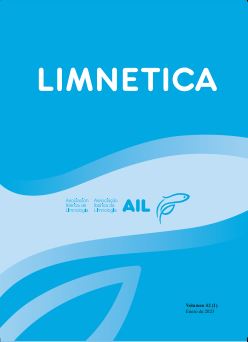Littoral areas of Amazonian floodplain lakes: a biological reserve to biodiversity loss
Abstract
Carbon from aquatic plants and periphyton in littoral zones subsidize food webs. Field work was carried out in two different lake types in the Colombian Amazon: a várzea (Yahuarcaca) and an igapó (Pacatúa). Plants in the littoral zone of várzea Lake had higher photosynthetic biomass compared to the plants of the littoral zone of igapó, but differences in root biomass were not significant. The two littoral zones contained a relatively high species richness and diversity (Shannon-Wiener Index) of organisms associated with the roots, although no significant differences existed between the two lakes. Littoral areas may be important in relatively isolated and physically fragmented large terrestrial landscapes such as the Amazon basin.
Downloads
Published
Issue
Section
License
Authors publishing in the journal agree to the following terms
Limnetica is licensed under a Creative Commons Attribution-NonCommercial 4.0 International License.


